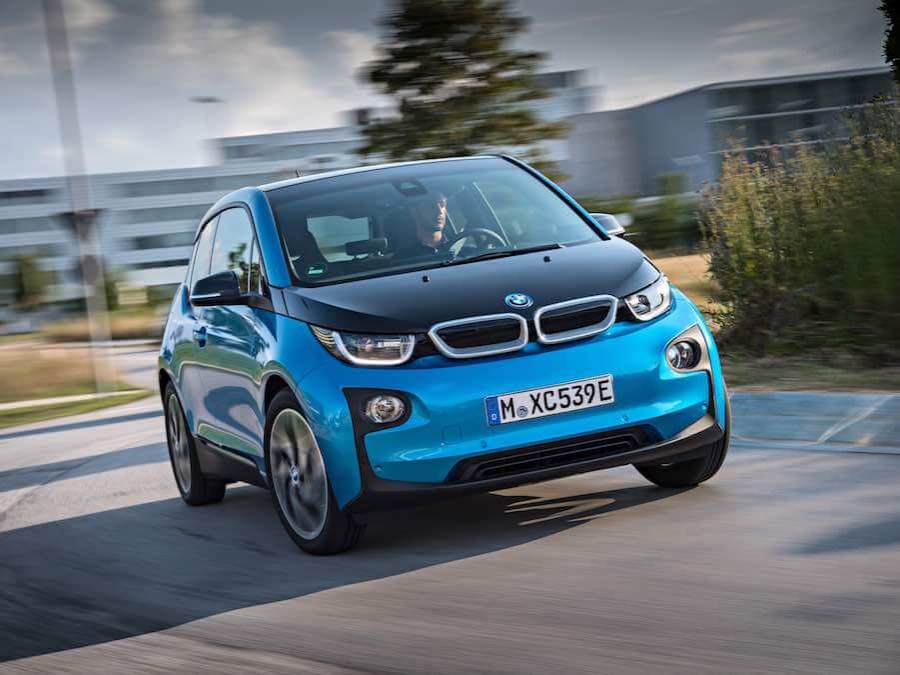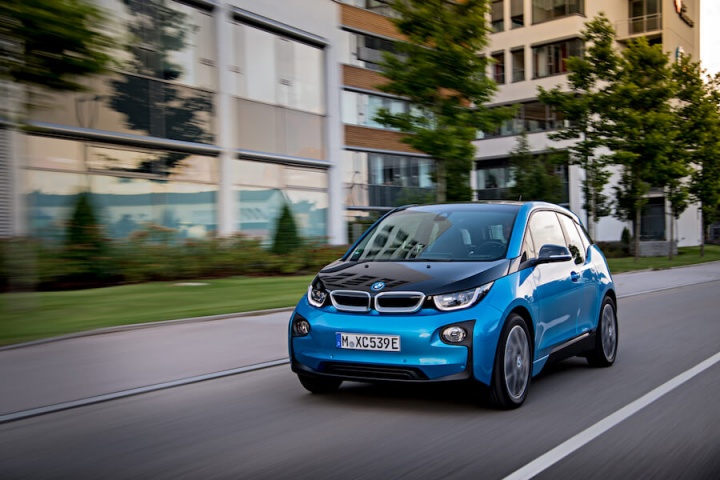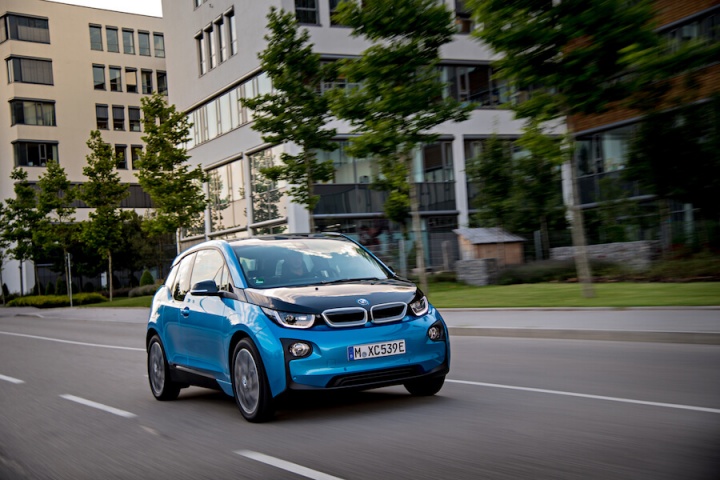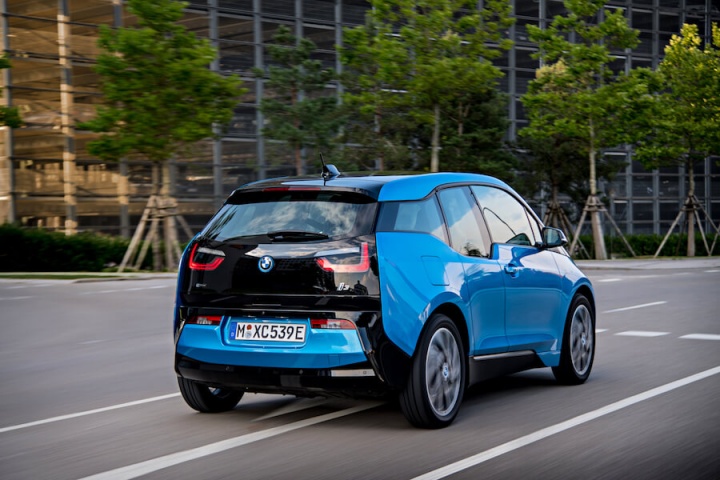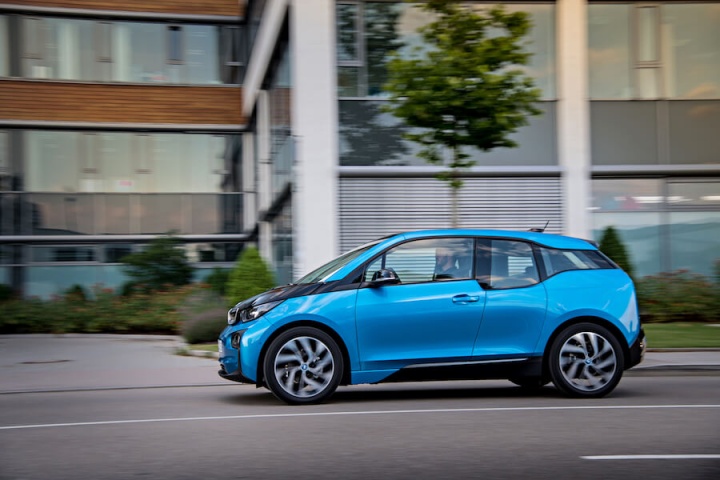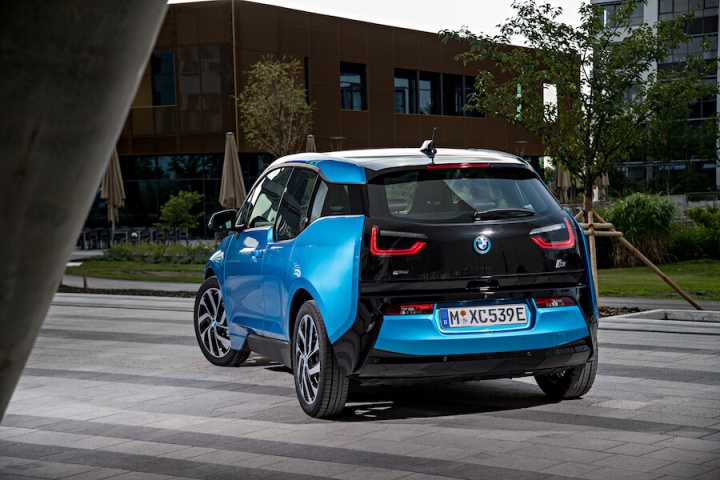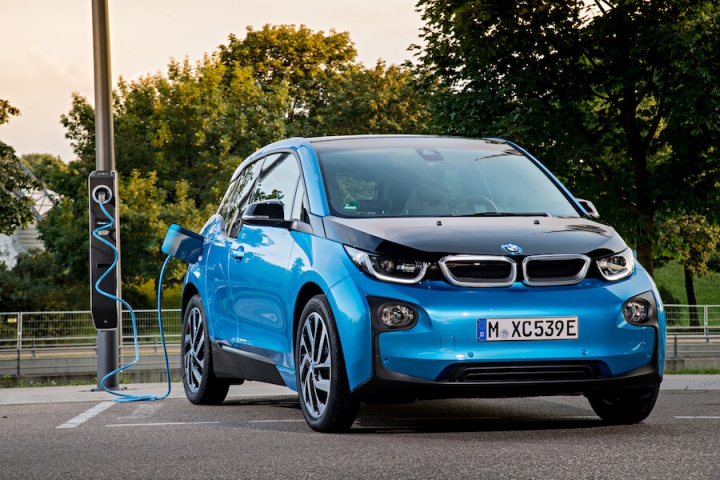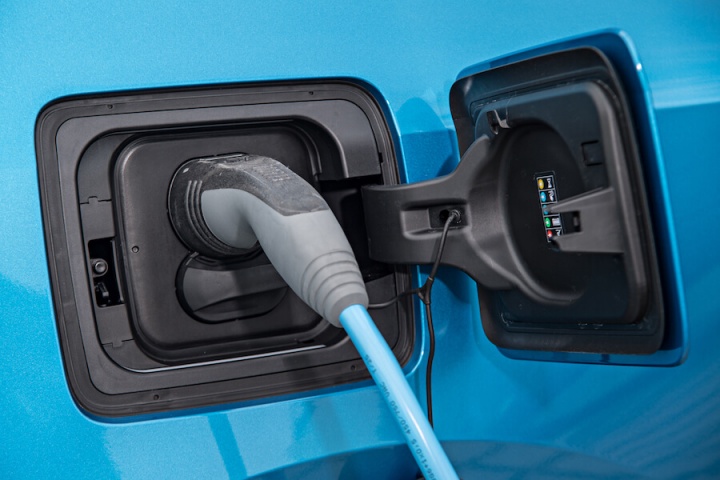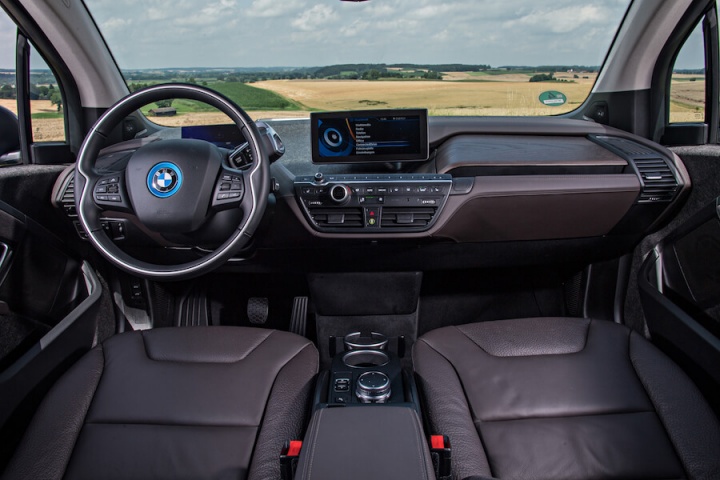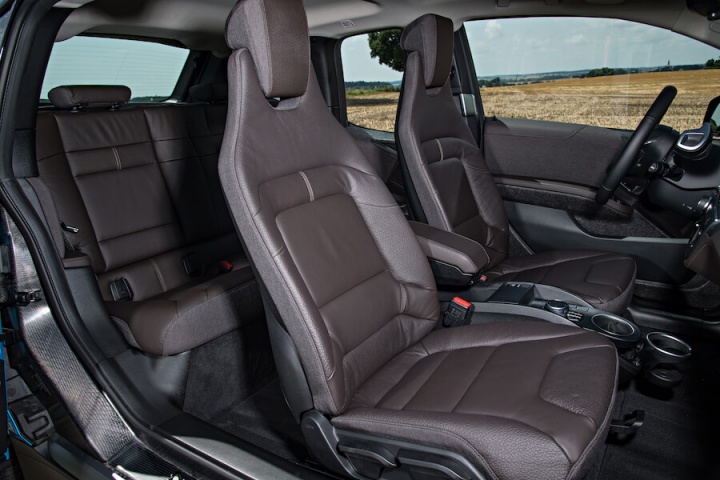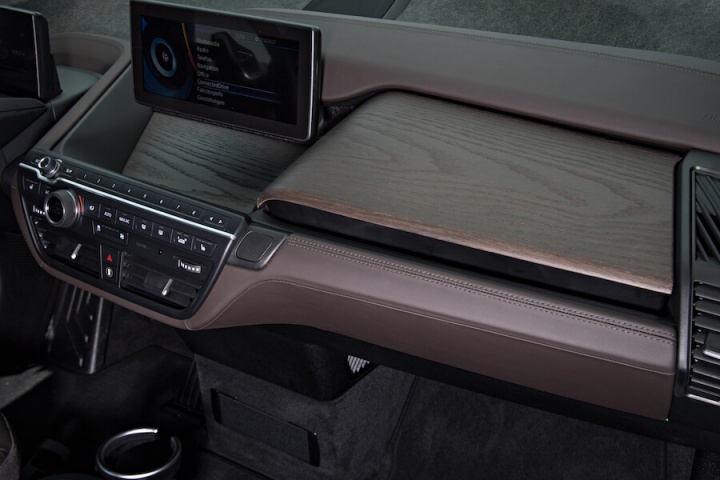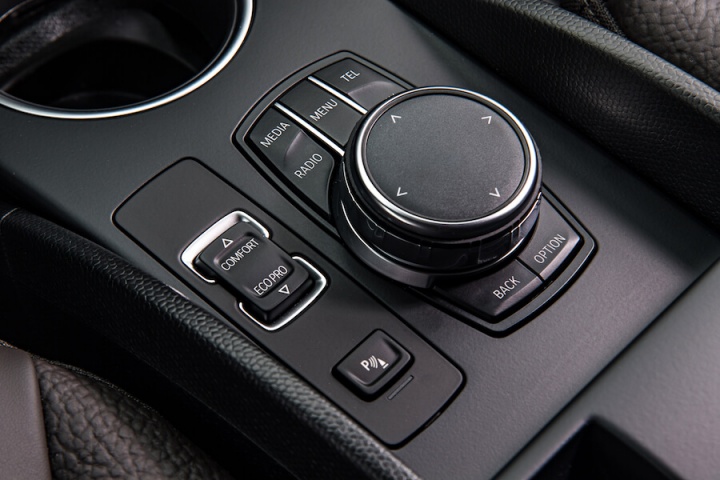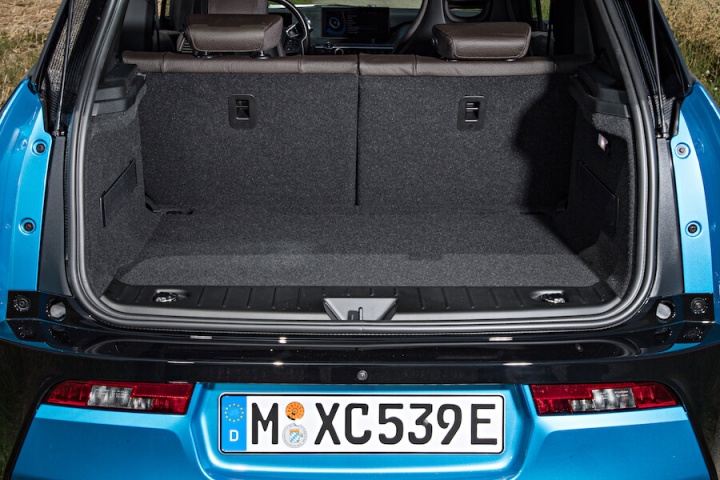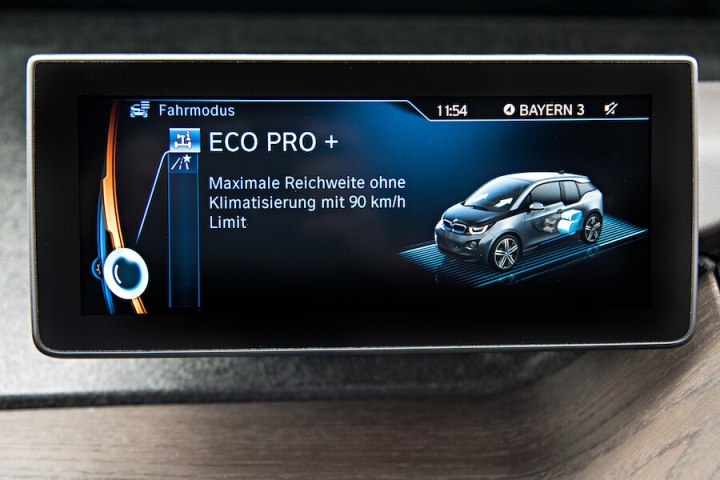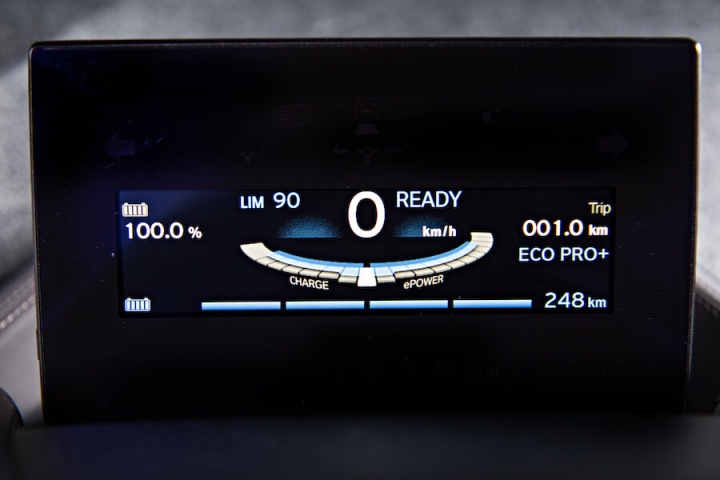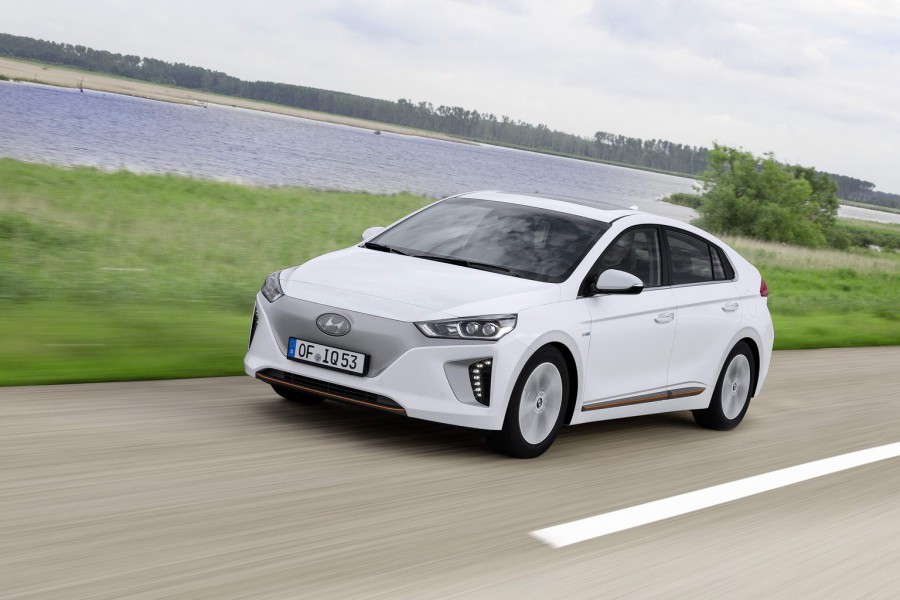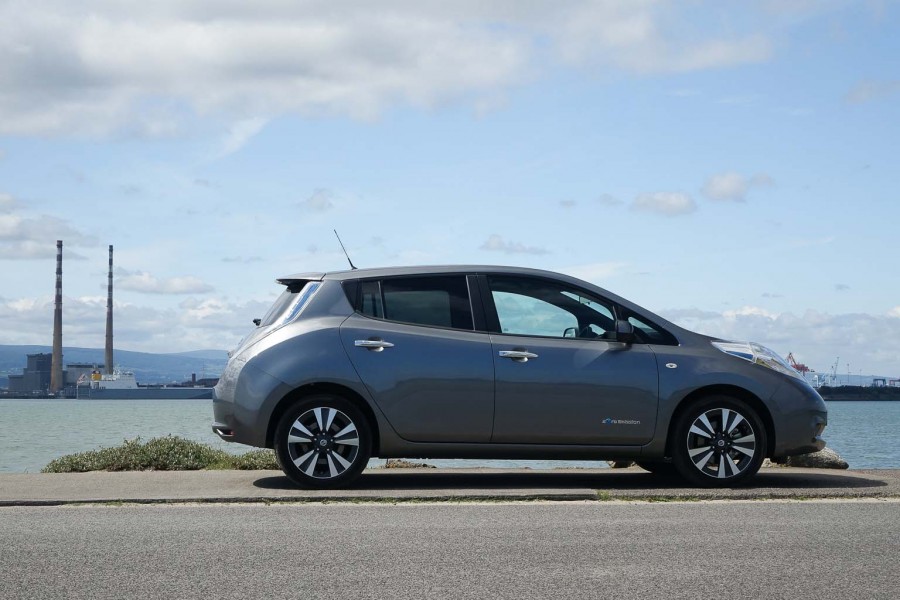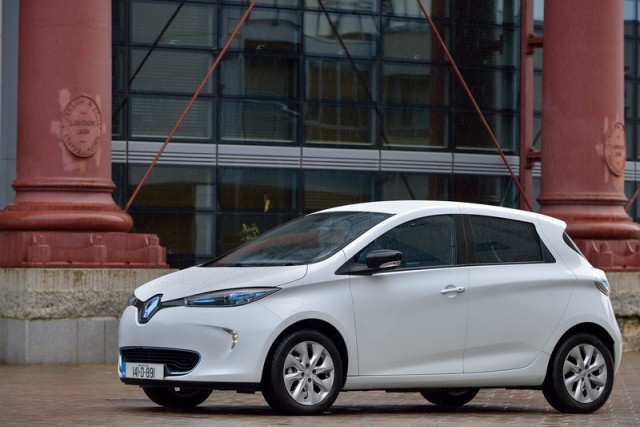BMW ups the ampere hours (Ah) storage density of the lithium-ion battery pack on its superb i3 electric vehicle (EV) and gives us a model with a net 29kWh of capacity to play with. Nothing else has changed on the radical German hatchback apart from that, but now it has a class-leading 300km potential range, it's even further ahead of its competitors than ever before.
In the metal
Quoting the Ah numbers of the lithium-ion (Li-ion) battery pack on board the BMW i3 is all well and good, but as your average customer couldn't give two figs about electrical this and current flow that, BMW would have been better off if it had christened this new 94Ah model the 'Long Range i3'; although, presumably, it doesn't want the 60Ah version (which, in Ireland at least, is now discontinued - although it soldiers on alongside the freshman in other markets) to be saddled with any 'Short Range' connotations.
But that's precisely what this 94Ah i3 is, a pure EV that can get you further on one charge than it could before. That should banish the spectre of range anxiety for most, although if you remain a bit nervous then the 94Ah i3 can still be fitted with the tiny 650cc twin petrol motor to turn it into the €43,330 Range Extender model. The 94Ah REx can apparently do 330km in everyday driving, which is to say, BMW says it can theoretically go even further, but as people like to be comfortable and therefore will use the heating system, bum-warming seats and various other electrical gadgets that zap battery power, anything approaching its claimed 444km maximum is going to be highly unlikely. Similarly, it therefore actually says the EV i3 94Ah is good for around 200km in the real world, rather than the 314km headline figure. Don't be disheartened; that's the same as the quoted max for the 60Ah and so therefore much more than the sub-150km actuality you'd get out of the superseded version of the i3.
Aside from the Li-ion storage capacity, nothing else has changed. The net 29kWh battery is exactly the same size in the latest i3 as the 19kWh item in the existing cars, the 170hp/250Nm motor with a single-speed reduction gear driving the rear wheels is untouched and you get precisely the same brilliant, edgy and futuristic body complemented by a passenger cabin of unmatched class in the affordable EV/hybrid world. Best news is, if you've got an old 60Ah i3 and you're feeling a bit narked that BMW has sort of rendered it obsolete already (why would you want an EV that's relatively range-limited and needs charging more often?), Optional Battery Retrofit should be self-explanatory: for a fee, BMW will equip your i3 with the improved 94Ah module. This is something Nissan explicitly said it couldn't do for 24kWh owners when it launched the 30kWh iteration of the Leaf last year, despite the Japanese firm saying its upgraded electrical juice box was exactly the same size as its predecessor too. Big plus point to BMW, then.
Driving it
As EVs go, dynamically this remains the best of the bunch by some distance. We found the ride on the skinny-tyred, 19-inch wheels suspect during one of our most recent drives of an i3, in a 60Ah REx in London, but this 94Ah model seemed a lot more compliant. Can its 50kg weight gain over the original i3 really explain that? We don't think so, but BMW cites no changes to the suspension, wheels or tyres, so maybe it was just the usually excellent German tarmac that helped the i3's cause. Although not all roads in Bavaria are billiard-table smooth, so don't automatically imagine the i3 will go to pot back here in Ireland.
The rest of the driving experience is as you were. The steering's exceptional for this class, and not bad by the general modern standards of electrically assisted systems. The handling is far more entertaining than any car even remotely similar could dare to dream of, so it feels like a true BMW if you still enjoy a quick back-road thrash. And the absence of a combustion engine only focuses your ears on the whirr of the tyres and the ruffling susurrations of the wind around the passenger cabin, although once you stop deliberately straining to hear them you quickly realise the noise suppression is excellent.
And you have a choice of the same three modes on the eDrive switch: Comfort, which allows the motor its maximum 170hp/250Nm head, leading to incredibly punchy performance - some rivals might have more torque, but they're nowhere near the 125kW potency of BMW's e-motor and don't forget the i3 is very light for an EV; Eco Pro, which slackens off the throttle and turns down the climate control to eke out the volts, while simultaneously increasing the regenerative braking effect and setting a maximum speed of 130km/h; and then Eco Pro+, which is the set-up aimed at the greenest of environmental types, as it disengages climate control, trims outright velocity to 90km/h, turns the throttle to fuzzy mush and ramps the level of regen retardation up to 'emergency stop' intensity.
You'll want to pick it, though, if you aim to get near that 300km quoted range. For all the talk of battery swaps and range extenders, what really matters here is how far did the i3 94Ah go on a charge, how much battery power did it use, what was left on the range and what were the conditions like? Well, allow us to expand on that. It was warm and humid around Munich on our test drive, so while still plugged into the mains the car's cabin had been pre-conditioned by the climate control system. And we kept using the automatic A/C on the drive, given we didn't want to sweat buckets into the nice BMW seats. It also started drizzling with rain, necessitating wipers and lights, while we didn't exactly hang about on the (largely flat) open roads, performing a number of overtakes on two-lane highways with ease in Comfort mode.
So, what with one thing balancing out another, we'd say these were average usage conditions. Right, stat attack - we did 50km on purely urban and extra-urban roads, with no motorways, meaning we encountered plenty of junctions and obstacles leading to start/stop conditions, as well as ebb-and-flow traffic. For every 50km/h zone, we ran the car in Eco Pro+; in 70- and 100km/h areas, we stepped up to Eco Pro; and when we needed maximum acceleration, we briefly flirted with Comfort. Both of the more frugal modes illuminate a blue 'ECO PRO' legend on the dashboard and have enough regenerative braking power for one-pedal driving, which meant that, overall, we achieved a battery usage of 14.6kWh/100km, with slightly less than a quarter of its charge exhausted. On starting the trip, the i3 reckoned if we stayed in Comfort we could have gone 173km, in Eco Pro 195km and in Eco Pro+, 231km. By the end of the journey, the corresponding figures were 161km, 164km and 192km, which - if you add on the 50km covered - can be extrapolated to suggest we could have continued driving in the same style and gone 211km, 214km or 242km respectively. Maybe more, if we'd calmed down a bit when out in the countryside.
Did you follow all that? Essentially, what we're saying is this: we would absolutely, unequivocally and happily use an i3 94Ah pure EV as a daily driver, even in our northerly climate, because it looks like a 200km real-world range is entirely achievable - heck, let's be brave and say 230km wouldn't be out of the question. And as advances in BMW's charging technology mean the i3 94Ah takes the same time to replenish its stored electricity as it did before (less than three hours on three-phase 11kW AC supply) things look very rosy indeed for the avant-garde BMW. Zero-emissions range anxiety? Pah! What range anxiety?
What you get for your money
Great news here as the 94Ah EV is considerably less money than the 60Ah REx we tested on Irish roads not many moons ago. So the pure electric i3 now costs €46,300 and the 94Ah REx is €50,830. Sound a lot? That's because we've not factored in the grants yet. The gap between the two widens, because the REx emits 12g/km CO2 and therefore loses €2,500 of VRT relief compared to the EV, meaning a €7,500 rebate in total. The non-REx i3, though, gets the full €10,000 off, bringing it back down to €36,300. Not the cheapest EV, sure, but as it comes with a comprehensive equipment list and a feeling of quality unequalled in the sector, it actually feels like a bit of a bargain.
Summary
Come on, look at it - in Protonic Blue, a freshly introduced shade that was previously exclusive to the i8 supercar, the BMW i3 is like nothing else out there. It's funky without being weird (Toyota Prius MkIV, we're looking at you), attractive without having to resort to dull lines; it's precisely what a usable, future-gazing EV should be. The interior's fantastic and, crucially, practical. And now the Beemer can go a realistic 200km in day-to-day use, or even around 250km if you're an attentive driver and you can live without climate control, it's a far more feasible prospect as a primary car than it ever has been before. With the introduction of the BMW i3 94Ah, the best EV just got markedly better.

